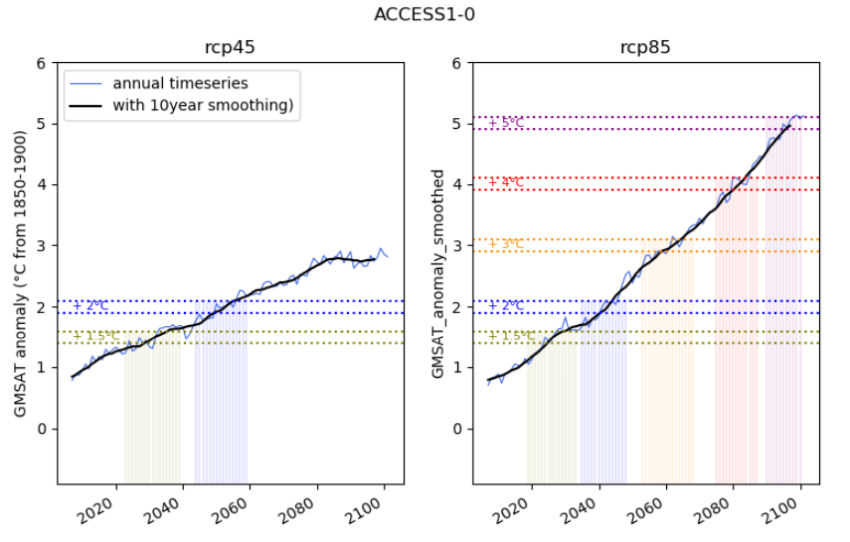Climate Change in Australia
Climate information, projections, tools and data
Methods
How can we assess Australian climate change at each warming level?
When looking at projections and impact assessments for the emissions pathways described by the Representative Concentration Pathways (RCPs), it is possible to use a rough rule of thumb to convert to warming levels, e.g. RCP8.5 is roughly equivalent to +2 °C warming level in the late 2030s and the 2040s or +3 °C in around 2050 to 2080. This is less precise than using more formal methods, but it is useful to assess and interpret existing results from RCPs into a warming level lens. See Reaching Global Warming Levels for more
To produce projections, it is important to use methods of estimating climate change at warming levels that are reliable and consistent with international good practice. There are various methods to estimate climate change at different global warming levels, see James et al. (2017) for a summary of many of them.
Download Technical Note 3 - Global Warming Levels methods
There are two methods used here – there are other approaches not used here but that could be used and compared in future (see Technical note 3).
- For regional warming since the early baseline, we use the ratio of global to regional change in the historical record projected forward (used in Years at +1.5 °C level ). This is only applied to average temperature change.
- The main method used is 'Time Sampling': using model simulations run for the emissions pathways and finding when in time they are simulating a world at the given global warming level. The results for regional climate change are extracted for those years and the difference to a baseline is calculated. This is illustrated in the figure.

This graph shows the global mean surface temperature (GMSAT) simulated by Australia’s ACCESSS-1.0 model for the period 2005–2100, relative to the 1850–1900 baseline, and the years detected for each warming level. See Technical note 3 for more details.
- Advantages of this method over other methods:
- Uses all available models,
- Doesn’t assume that change scales up in a linear way between different warming levels
- Limitations:
- The warming level may be passed through quickly (giving a small sample),
- Variability at longer timescales (e.g. decades) can affect results,
- If RCPs are combined then this assumes that the climate change in Australia is the same no matter how fast the world gets there
Page last updated 16th January 2023.



